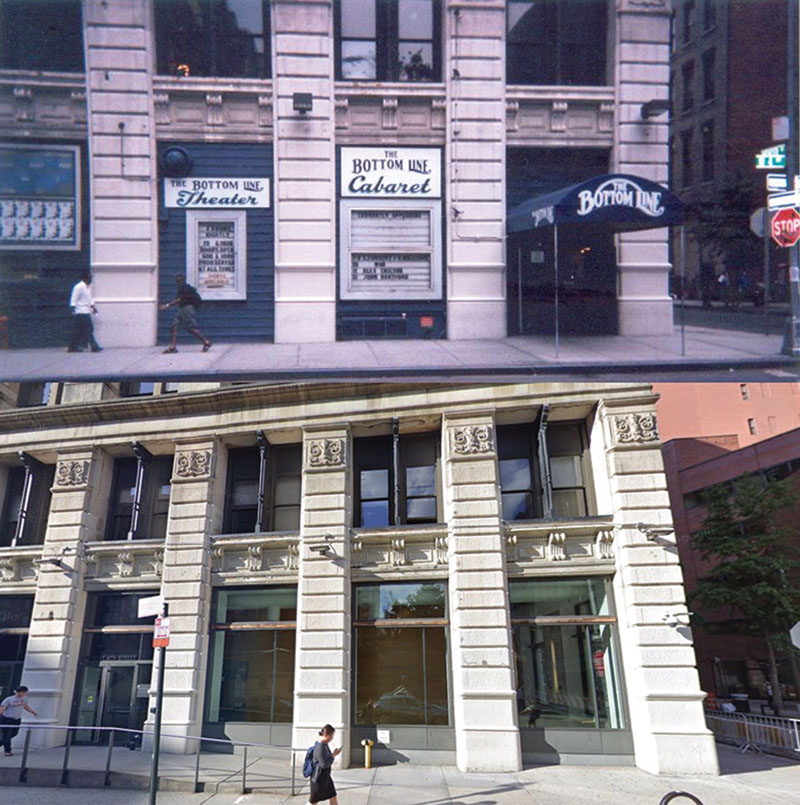Rock the Bricks: The Bottom Line/Greenwich Village - by Larry Ross

LJR Realty Associates
This week we dive into what was The Bottom Line, a historic music venue formerly located at 15 West 4th St. in the Greenwich Village section of Manhattan. It was located on the ground floor of a classic looking turn-of-the century loft style office building owned by New York University, at the northwest corner of West 4th and Mercer Sts. The venue which opened in 1974 had a seating capacity of 400 and hosted major musical acts and was a showcase for up and coming artists. Notable performers were Eric Clapton, Linda Ronstadt, The Police, Prince, Pat Benatar, Barry Manilow, Dire Straits, Miles Davis, and Van Morrison. Also making appearances were Neil Young, Billy Joel, Daryl Hall & John Oates, Joan Baez, the Cars and Emmylou Harris. It was a favorite hangout for networking music executives.

In the 16th century, marshes, streams, and hills, as well as farmed tobacco land called Sapokanican by the Lenape Native American tribe, comprised most of this area. It was located several miles north just outside the primary border of the Dutch New Amsterdam settlement. The land was also referred to as “Noortwyck,” or the North District. There is some evidence that an early settler named it after a Long Island Dutch town called “Greenwijck” which also means “Pine District”. The name was subsequently adopted by the British as “Greenwich” which was a high-end resort back home with the same name. In the late 1700’s the city purchased land, now known as Washington Square Park, which became a burial ground for the city’s poorest and had gallows for public viewing. The area became dotted with federal style rowhouses and red brick townhomes, some of which remain. The west part of the Village was also home to New York State’s first penitentiary where the phrase “being sent up the river” took hold. In the early 1800’s a yellow fever epidemic pushed residents here where many would remain and make it their home. By the mid 1800’s, waves of immigrants changed the dynamics of the neighborhood and pushed out the upper class, which also led to a commercialization of the area.
Greenwich Village played an important part in American bohemian culture in the early and mid-20th century. The neighborhood was known for artistic residents and the alternative lifestyles they led. It became a focal point of new ideas and changes, whether political or cultural and became home to literary salons, art galleries, and experimental theaters.
By 2003 the Bottom Line was struggling to keep its doors open and was unable to renegotiate a lease with its landlord, eventually closing the following year. The iconic venue left an indelible mark in New York City music history, acting as springboard for many musicians. The building is now home to New York University classrooms.
Larry Ross is the founder and CEO of LJR Realty Associates, New York, N.Y.
AmTrustRE completes $211m acquisition of 250 Madison Ave.


Behind the post: Why reels, stories, and shorts work for CRE (and how to use them) - by Kimberly Zar Bloorian

Strategic pause - by Shallini Mehra and Chirag Doshi

Lower interest rates and more loan restructuring can help negate any negative trending of NOI on some CRE projects - by Michael Zysman









.jpg)

.gif)